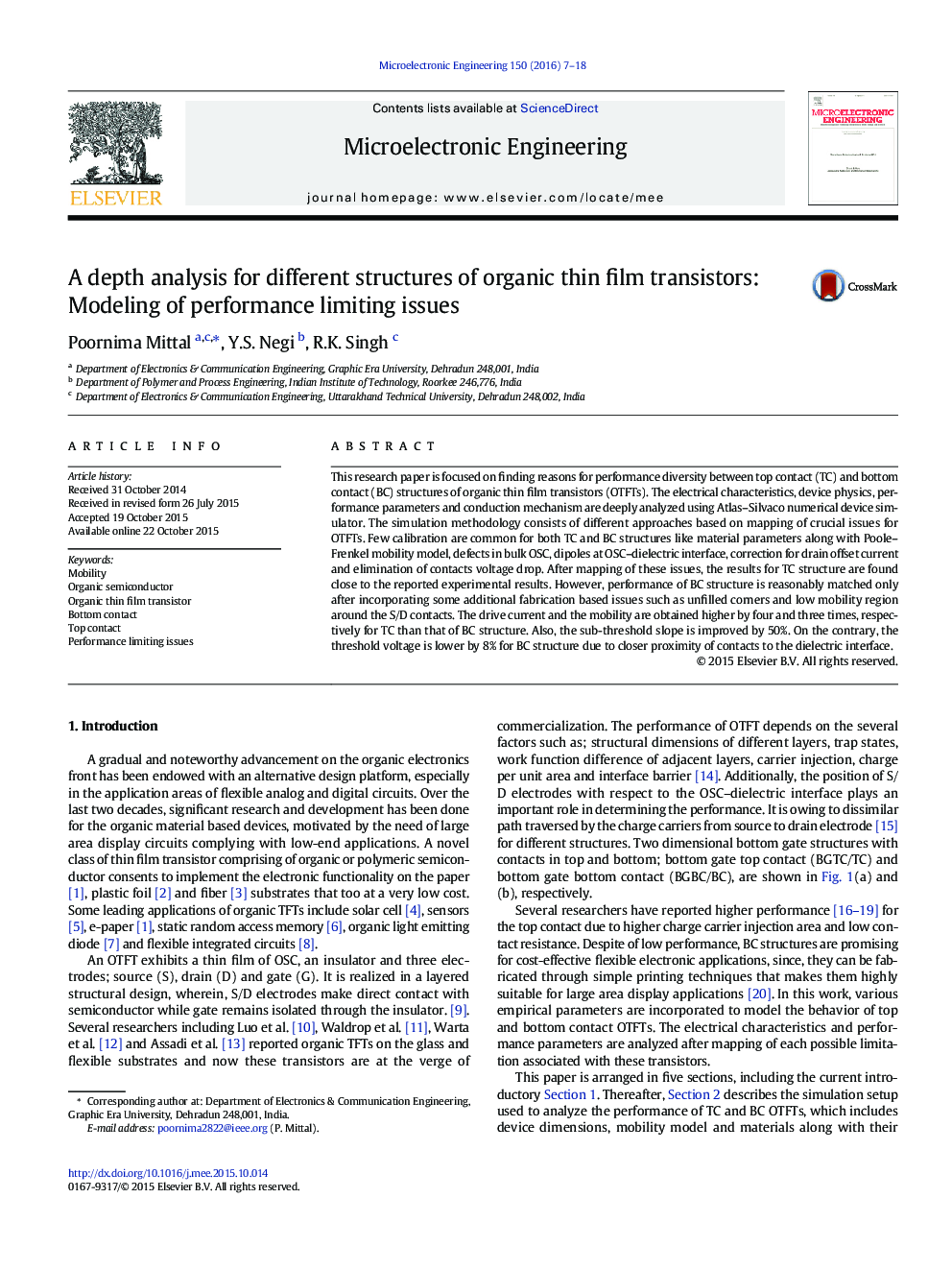| Article ID | Journal | Published Year | Pages | File Type |
|---|---|---|---|---|
| 541166 | Microelectronic Engineering | 2016 | 12 Pages |
•Paper is focused on finding reasons for performance diversity between top contact (TC) and bottom contact (BC) structures of OTFTs.•Electrical behavior, device physics, performance parameters and conduction mechanism are deeply analyzed for both TC and BC structures.•Simulation methodology consists of different approaches based on mapping of crucial issues for OTFTs.•Comparison is performed for top and bottom contact OTFT devices.•Drive current and the mobility are obtained higher by four and three times, respectively for TC than that of BC structure.
This research paper is focused on finding reasons for performance diversity between top contact (TC) and bottom contact (BC) structures of organic thin film transistors (OTFTs). The electrical characteristics, device physics, performance parameters and conduction mechanism are deeply analyzed using Atlas–Silvaco numerical device simulator. The simulation methodology consists of different approaches based on mapping of crucial issues for OTFTs. Few calibration are common for both TC and BC structures like material parameters along with Poole–Frenkel mobility model, defects in bulk OSC, dipoles at OSC–dielectric interface, correction for drain offset current and elimination of contacts voltage drop. After mapping of these issues, the results for TC structure are found close to the reported experimental results. However, performance of BC structure is reasonably matched only after incorporating some additional fabrication based issues such as unfilled corners and low mobility region around the S/D contacts. The drive current and the mobility are obtained higher by four and three times, respectively for TC than that of BC structure. Also, the sub-threshold slope is improved by 50%. On the contrary, the threshold voltage is lower by 8% for BC structure due to closer proximity of contacts to the dielectric interface.
Graphical abstractCharacteristic plots for (a) drain current & threshold voltage and (b) mobility & sub-threshold slope with respect to different simulation strategies; 1. Material and model parameters, 2. Defects in bulk OSC, 3. Dipoles at OSC–dielectric interface, 4. Correction for drain offset current, 5. Correction for non-ohmic contacts, 6. Unfilled corners near the contacts and 7. Low mobility region around the S/D contacts) proposed to model various issues of TC and BC transistors.Figure optionsDownload full-size imageDownload as PowerPoint slide
